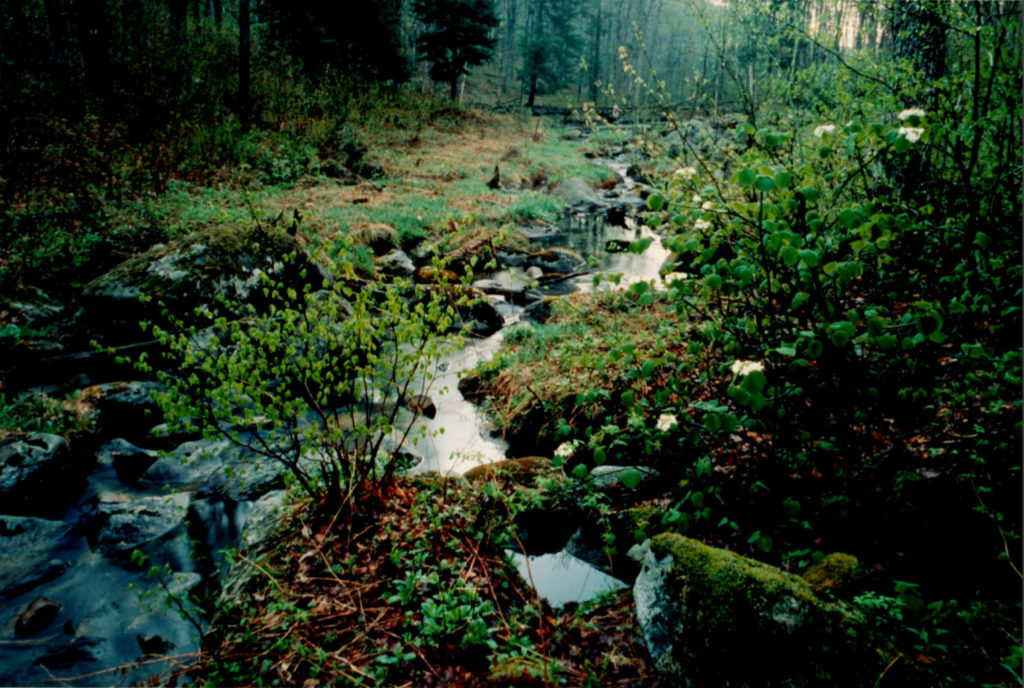Land
The magic and beauty of Sage Mountain Botanical Sanctuary provides the rare opportunity for humans to interact with, learn from, and gain greater appreciation for the diverse ecosystem stewarded here and, in turn, develop greater personal stewardship for earth’s precious resources.
Our stewardship focus is to protect this land, advocate for conservation of neighboring wilderness, restore habitat for the megafauna and rare medicinal plants that live here, and keep this sacred space open to past students and future visitors to continue learning from and finding healing within the wilderness. You can join our mission, and carry forward this wild legacy for future generations.

Wilderness may well be the most rare and precious gift we can make to the future, a gift of overwhelming ecological, economic and spiritual significance.
Jim Northrup, Forest Watch – March 1999
Sage Mountain Botanical Sanctuary covers an expansive 600 acres of wilderness in Central Vermont on unceded Abenaki territory, within a 82,000 acre contiguous forest that is connected directly to the 26,000-acre Groton State Forest. A unique intersection of elevation, geology, and climate make for a highly biodiverse collection of ecosystems, comprised of a variety of natural communities including the rare Northern White Cedar Swamp, all supporting a vast array of uncommon and threatened flora and fauna.


Sage Mountain Botanical Sanctuary is located at the base of the Knox Mountain range, on land that was part of the largely clear-cut Bennett Mill property nearly 100 years ago. After almost a century of forest regeneration, the land is now designated as rare and highest-priority landscape for conservation and biodiversity by the state of Vermont, and is part of the largest contiguous wilderness corridor of its kind in the region.
A significant riparian wetland corridor, including dozens of sprins and vernal pools, weave across the landscape and connect Sage Mountain to surrounding wetlands within the headwaters of the Connecticut River watershed.
Over 500 plant species have been inventoried within the forests and gardens at Sage Mountain, including some of New England’s largest stands of rare Cyprepedium (Ladies Slipper) along with dozens of other rare or endangered plants, including Trillium, Ground Orchid, Ginseng, Chaga and Goldenseal.


Some of New England’s most important keystone wildlife including moose, bobcat, fisher, and black bear call this wilderness corridor home. Historical remnants of days past, including stone walls from shepherding, foundations of maple syrup shacks, and turn-of-the-century moonshine artifacts are hidden within the forest.
In an era when the adverse effects of climate change on ecosystems and wildlife are increasingly apparent, large forest habitats like Sage Mountain Botanical Sanctuary are more critical than ever. Increased frequency and intensity of storms, increased spread of non-native plant populations, increased drought and heat, and outbreaks of insects and disease are all consequences of climate change. Large diverse forest habitats like ours are among the most significant factors supporting nature’s ability to adapt and develop biological resiliency.

